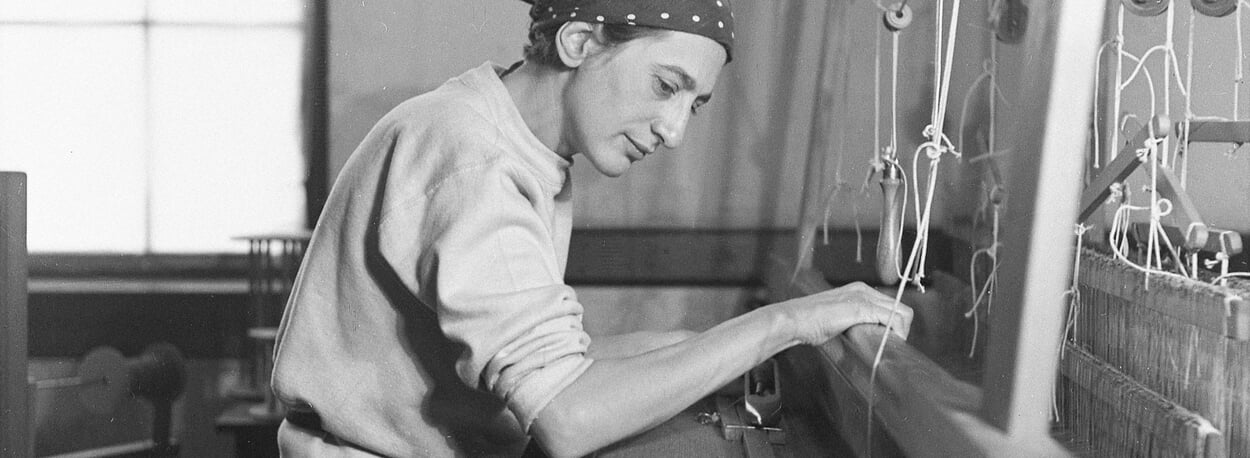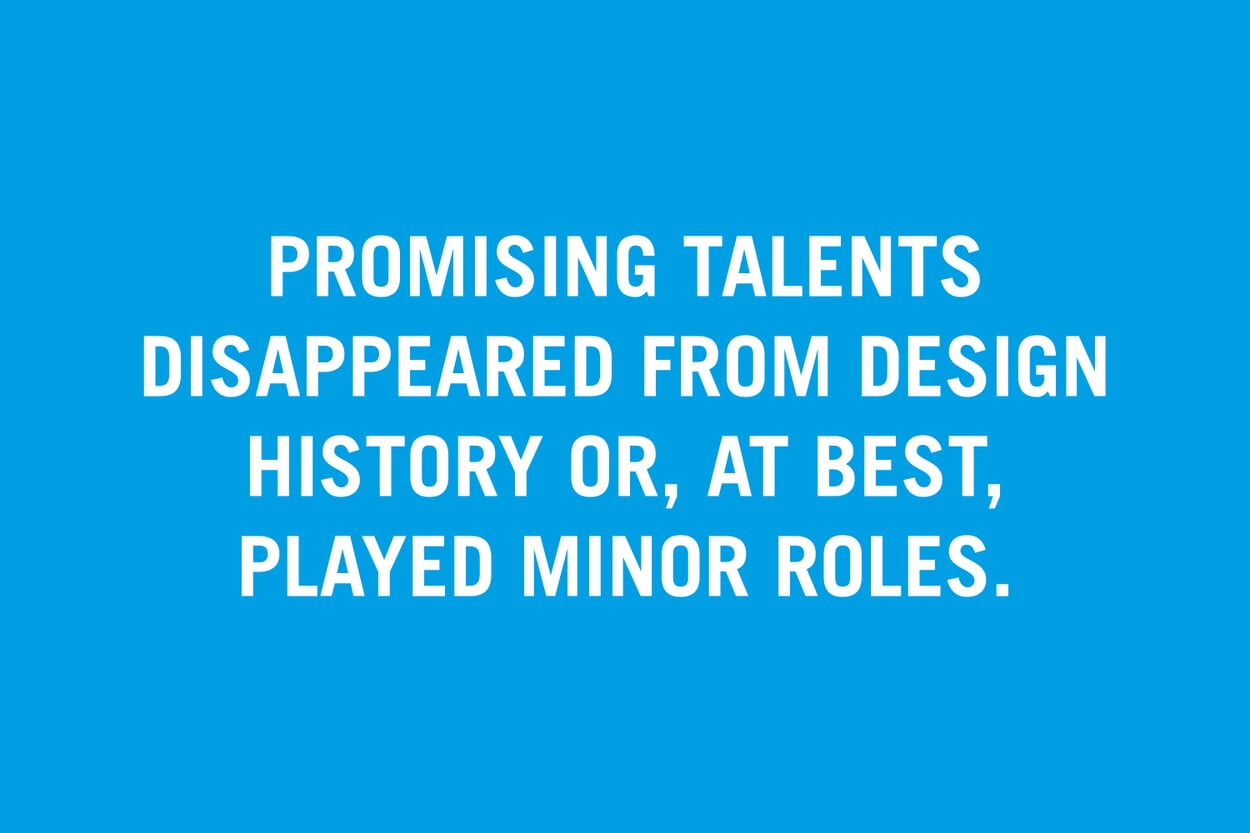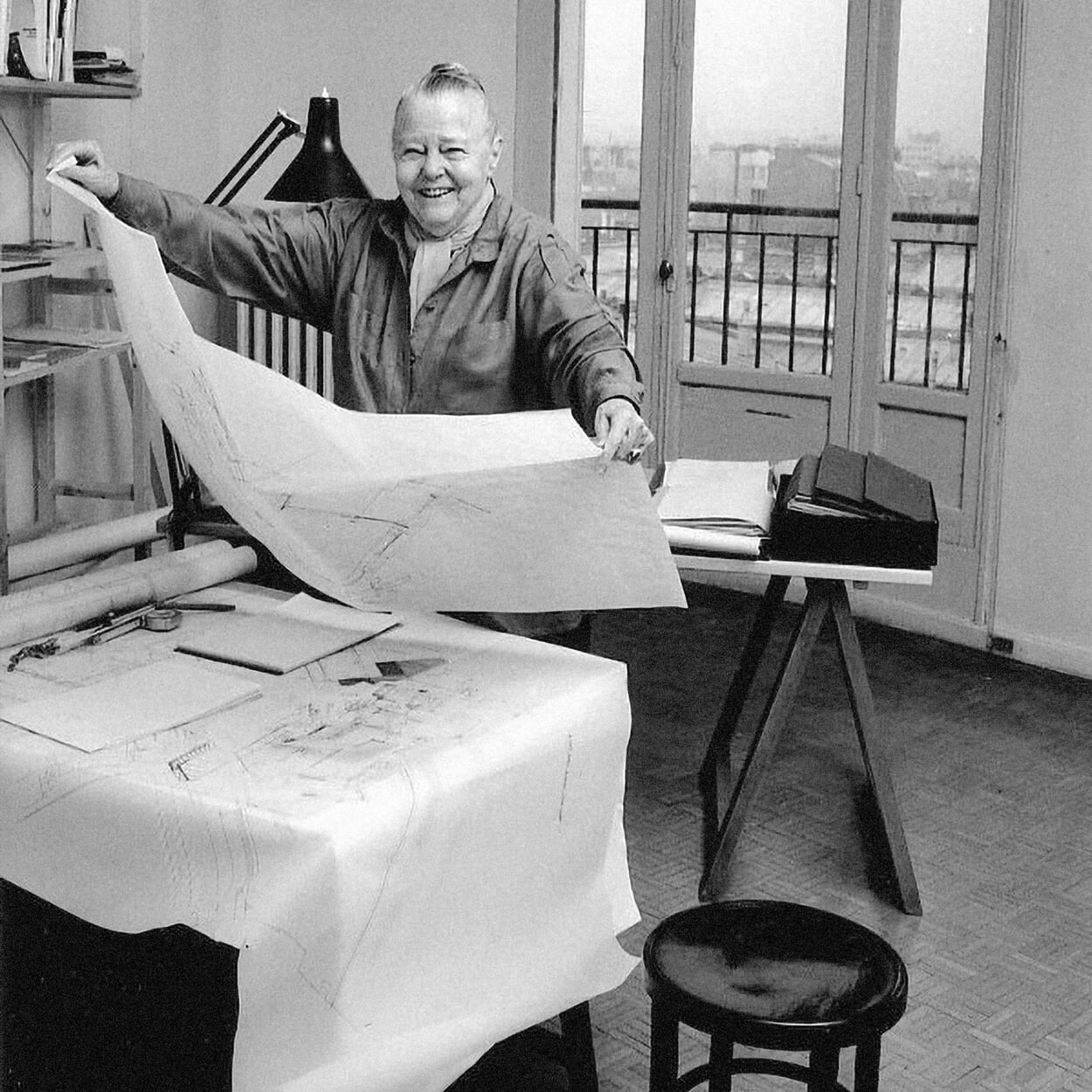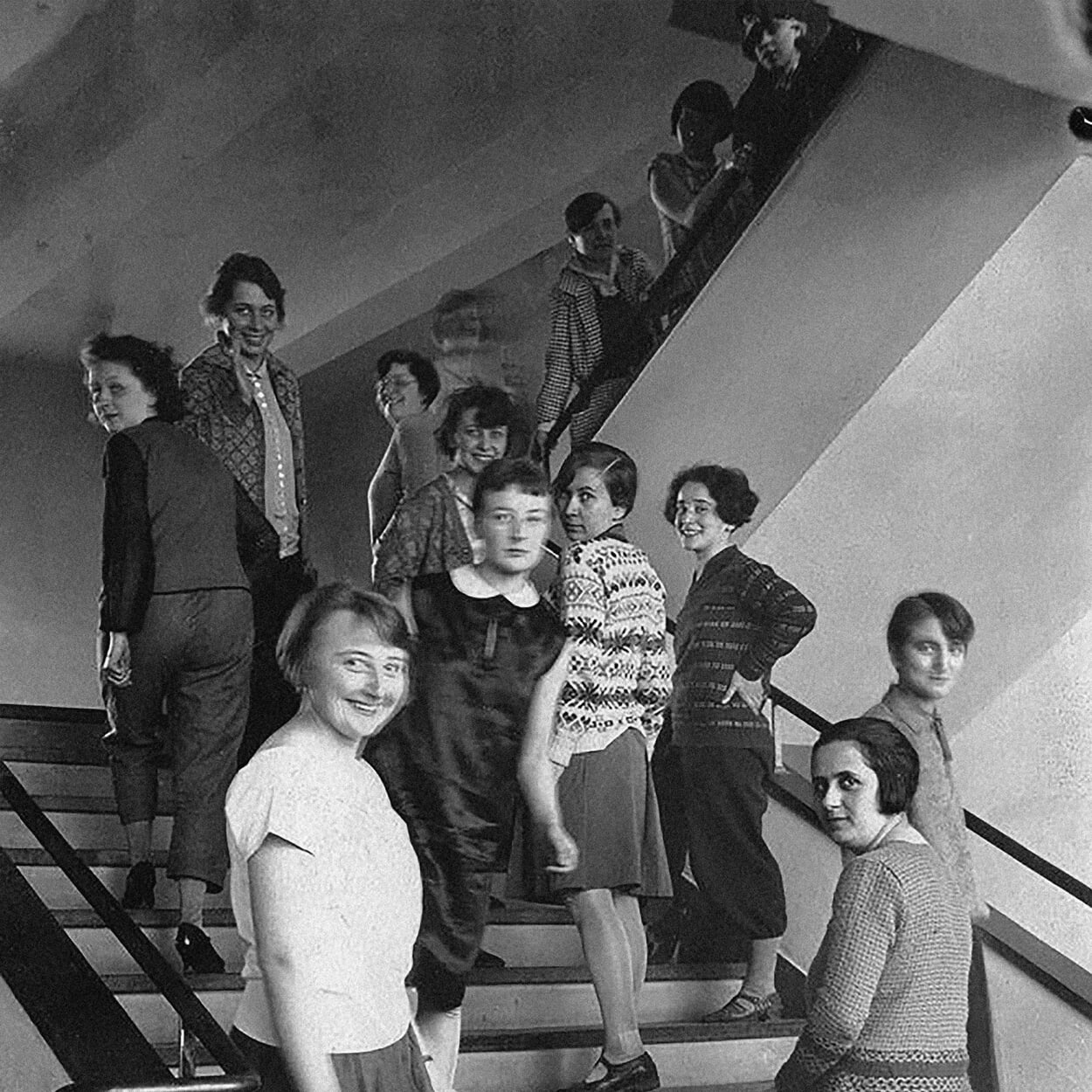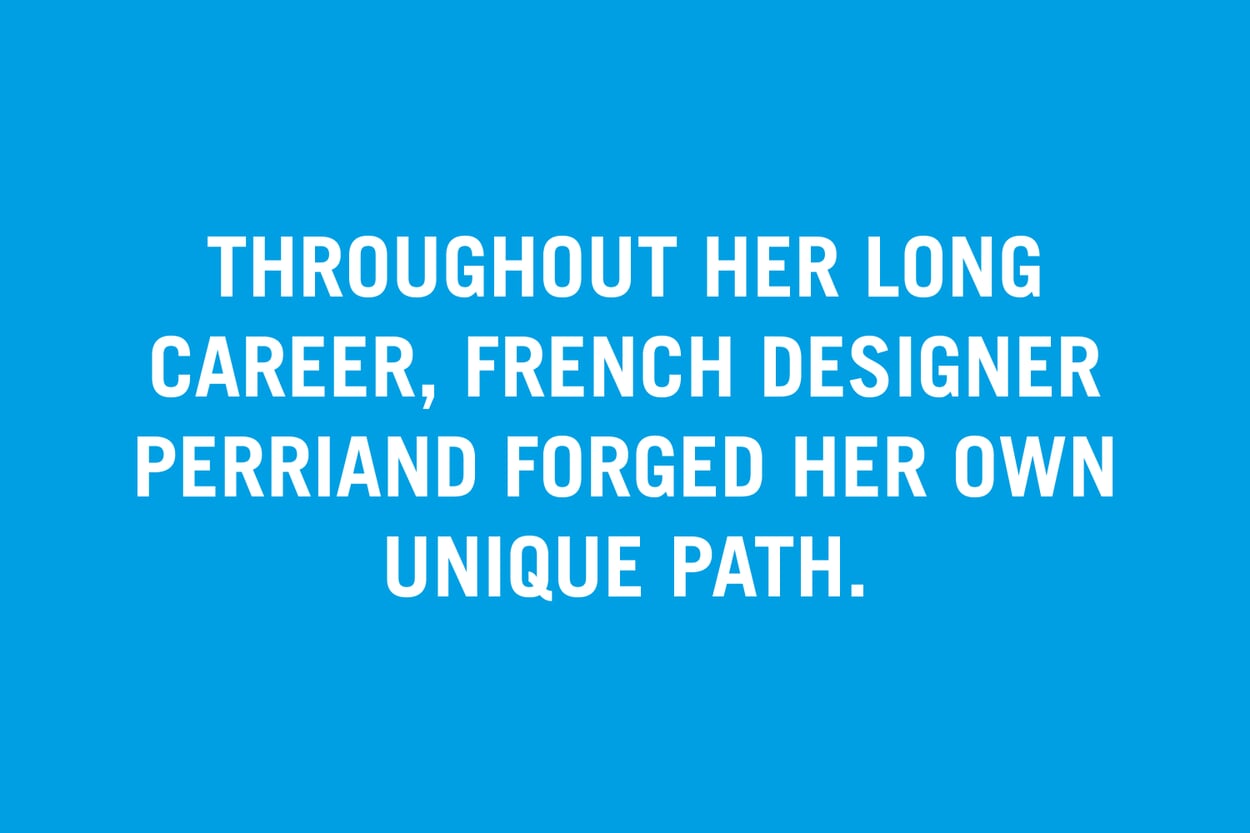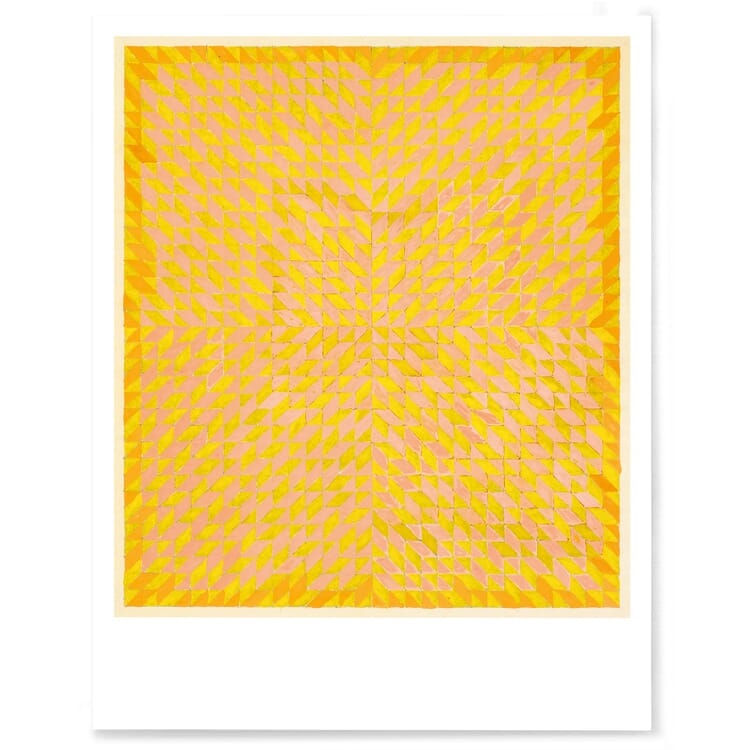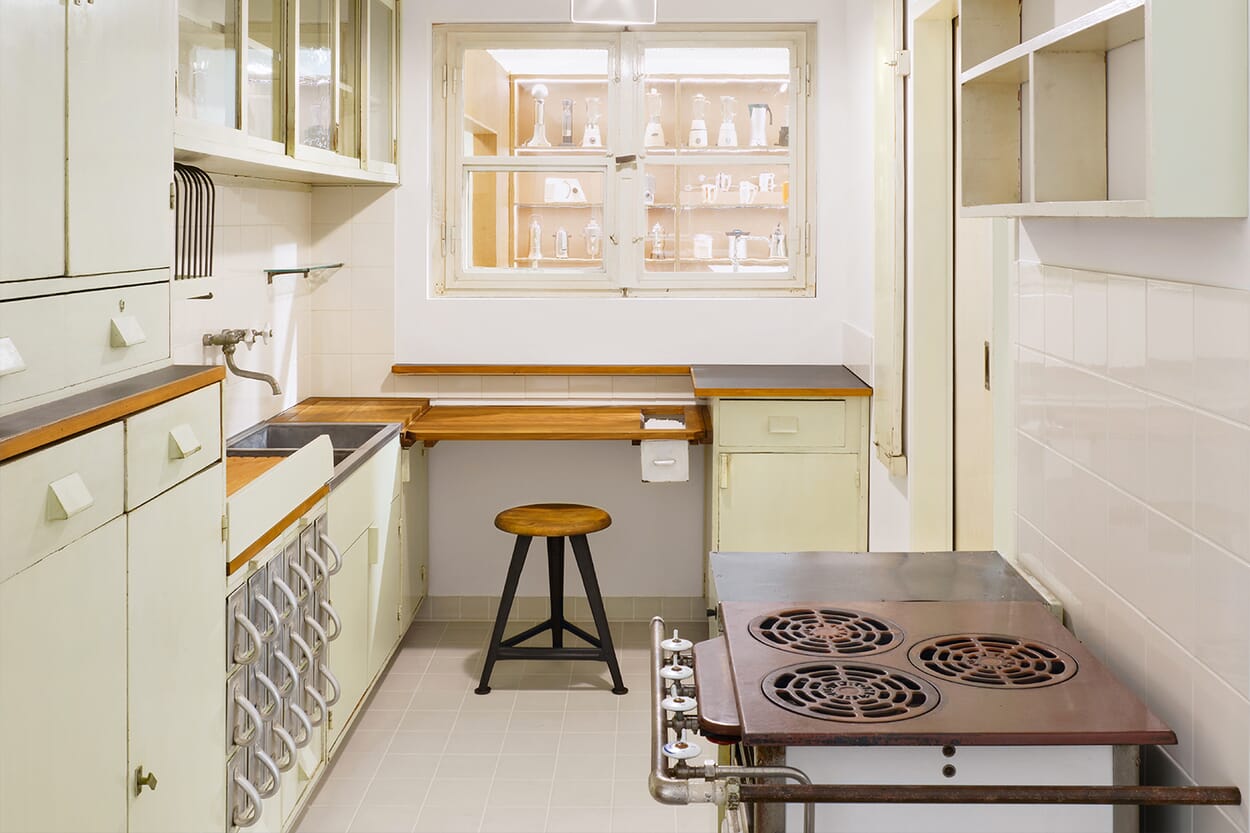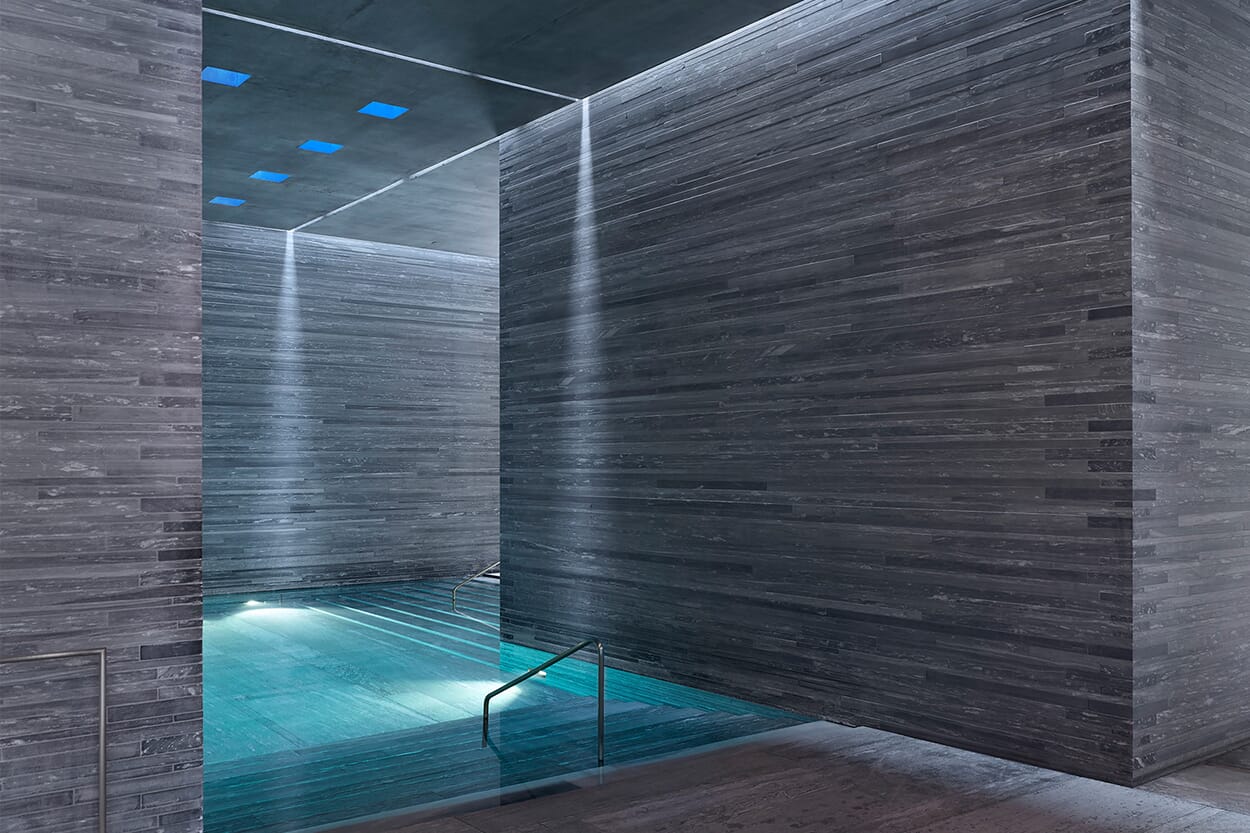Gestures of late justice
**The heroines of modernism in the spotlight: two current exhibitions in Krefeld and Bern pay homage to Charlotte Perriand and Anni Albers, and other female designers and architects of the 20th century are also slowly gaining the visibility that many of their male colleagues enjoyed throughout their lives **
Text: Jasmin Jouhar
There they stand, twelve men in suits and coats, with or without hats. Walter Gropius, Wassily Kandinsky and Lyonel Feininger casually holding cigarettes. Second from the right, the only woman: Gunta Stölzl. The famous group photo from 1926, taken on the roof of the Bauhaus building in Dessau, shows the masters of the legendary school. More than almost any other document, the photo demonstrates with probably unintentional clarity: a hundred years ago, architecture and design were a man's world, garnished with a few marginalized female figures. Modernism was modern - but not for everyone. While the men recommended themselves for the history books with glass façades, tubular steel chairs and manifestos, women had to fight for training opportunities, work and recognition, at the Bauhaus as well as elsewhere in Europe or the USA. Notorious was the decision by Bauhaus director Walter Gropius to send female students to the weaving workshop after the preliminary course, which from 1926 was headed by the same Gunta Stölzl as a master and exceptional figure. Promising talents disappeared completely from the history of design or at best played supporting roles as "assistant to" or "wife of". The historical ruptures of the 20th century also contributed to women falling into oblivion. Like the Bauhaus student Otti Berger, who was murdered in Auschwitz in 1944. In addition, the narrative of Western modernism as the heroic creation of ingenious white men proved to be quite enduring and still has an impact today. For example, furniture manufacturer Knoll International still markets classics such as the "Barcelona" armchair and the "Brno" chair as designs by Ludwig Mies van der Rohe - although experts today assume that Mies designed the furniture together with his then working and life partner Lilly Reich.
The Irish architect and designer Eileen Gray, photographed in the 1920s by Berenice Abbott
Architect and designer Charlotte Perriand in her studio in 1991
Group picture with ladies: Master Gunta Stölzl and her students on the Bauhaus staircase in 1928
But nothing lasts forever, and so research and institutions have been questioning the canon for some time and bringing female architects and designers into the spotlight. In Copenhagen, the Danish designer Nanna Ditzel was recently honored with a solo show. Two years ago, the Berlin Bauhaus Archive dedicated an exhibition to Otti Berger and documented her innovative textile work comprehensively for the first time. Such gestures of late justice are not a unique phenomenon in design. In the art world, too, galleries, biennials and museums have presented many forgotten and rediscovered female artists in recent years. Recently, the retrospective has almost reached the mainstream in the world of architecture with the documentary "E.1027 - Eileen Gray and the House by the Sea". Director Beatrice Minger traces the story of Irish architect and designer Eileen Gray - and the drama surrounding the house she built on the Côte d'Azur in 1929, "E.1027". While Gray's glass side table with the same name "E.1027" has long been considered an icon of modernism, her oeuvre as a whole is only now being recognized.
Currently, the red carpet of attention is being rolled out for two women whose life stories were also long overshadowed by men: Anni Albers and Charlotte Perriand. From November 7 to February 22, 2026, the Zentrum Paul Klee in Bern is presenting a comprehensive solo exhibition on the designer and artist Anni Albers. Although she received recognition during her lifetime, she remained the wife of her more famous husband Josef Albers, particularly in Germany. The two had met during their studies at the Bauhaus, and Anni Albers also joined the weaving mill against her will - but developed into an outstanding textile designer under her mentor Gunta Stölzl. After the couple emigrated to the USA, she also became an influential figure as a teacher at Black Mountain College. With obvious relevance right up to the present day. In addition to the major Bern exhibition, there have recently been several Anni Albers moments: among others, the Italian textile house Dedar launched a fabric collection based on her designs.
The Kunstmuseen Krefeld are dedicating the second major heroine exhibition this autumn to the architect and designer Charlotte Perriand. The show opens on November 2 and runs until March 2026. In her long career, the Frenchwoman Perriand worked for and with Le Corbusier and Jean Prouvé, two greats of modernist architectural history. And yet she went her own way, for example with the large-scale project Les Arcs. She developed the urban planning concept for the French winter sports resort and was able to realize several buildings. However, the tubular steel furniture that she developed in the 1920s with Le Corbusier and his cousin Pierre Jeanneret was long known under the abbreviation LC for Corbusier and was generally regarded as his designs. The Italian furniture manufacturer Cassina now sells the pieces under all three names. A special highlight of the exhibition in Krefeld: Perriand's designs are not only on display in the main building, the Kaiser Wilhelm Museum, in original pieces, sketches and photos. She is also given a stage in the annex, Haus Lange, designed by Ludwig Mies van der Rohe. A meeting of two exponents of modernism at eye level.
Incidentally, there is another group photo from the Bauhaus, one that is not quite as well-known as the shot on the roof terrace. It was taken by photographer T. Lux Feininger in 1928 and shows a group of young women scattered loosely across the stairs of the Bauhaus building in Dessau. They are Gunta Stölzl and her students from the weaving workshop, including Otti Berger. They do not appear as established and self-satisfied as the masters on the roof, but all the more lively and enterprising. It would be nice if this photo were as representative of the university as the group photo of the masters.
Images: Courtesy of the Western Regional Archives, State Archives of North Carolina, National Museum of Ireland / NMIEG. N, Wiki Commons, T. Lux Feininger
Prints by Anni Albers
More interesting facts
Kitchens are cultural history in a small space. Their design tells of technological upheavals, social role models and changing ideals. The journey from the Frankfurt kitchen of the 1920s to the open kitchen island of today is long - and revealing.
We encounter color everywhere - on products, in rooms, in the city. It makes surfaces visible - but its effect goes deeper. Color organizes and arranges, triggers emotions and conveys messages even before a word is spoken.
Anything but nothing: the joint is an indispensable design element in architecture and design, it separates and connects, provides precision and atmosphere. In the context of current debates on recycling and reuse, the joint is now gaining a whole new relevance.

